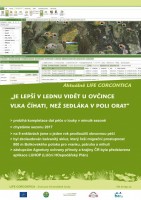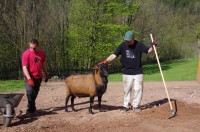2017 - Final season with the project
So this is the end of LIFE CORCONTICA, or its last season. We again succeeded in many things in 2017, of which we have been informing you on this website and via the LIFE CORCONTICA facebook page. This article will try to sum up all the information and share it with you. You can read a listing of all the activities, objective and outcomes for the whole project duration in the menu tab Achievements.
The mowers acquired under activity A2 in 2015 worked throughout the 2017 season too and managed to mow about 15 ha in often highly inaccessible or soddy meadows. When weather permitted, we managed to produce biomass for hay from these areas, bale the hay and offer it to the public.
This year was also the last year of implementation activities C.
In the last season, the project managed 41 meadow enclaves, covering a total of approx. 363 ha. Six enclaves (90 ha) were included in follow-up management; the respective plots are already receiving agricultural subsidies (SAPS, LFA, EZ, AEKO) and additional aid from MoE funds as necessary (PPK, POPFK). As in the last year, the LIFE CORCONTICA project meadows were half mowed (160 ha) and half grazed (140 ha).
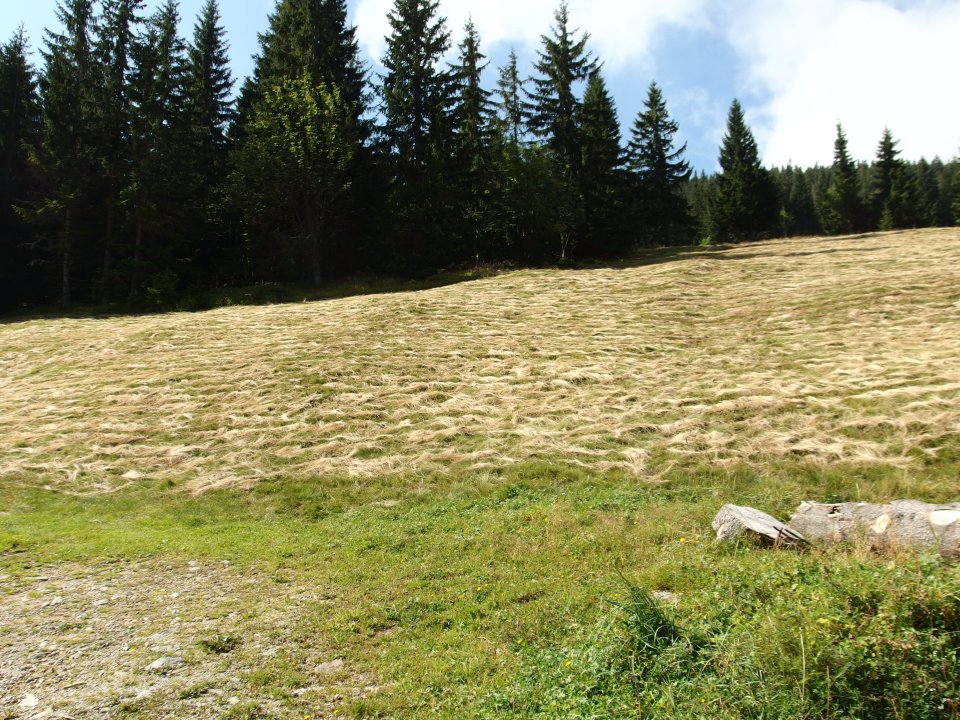
Thanks to the project, Krkonoše meadows are grazing grounds for about 2 thousand animals, mostly sheep. However, beef cattle have grazed in suitable meadows since last year (35 ha), and cows grazed at Lahrovy Boudy after many years (decades) in 2017.
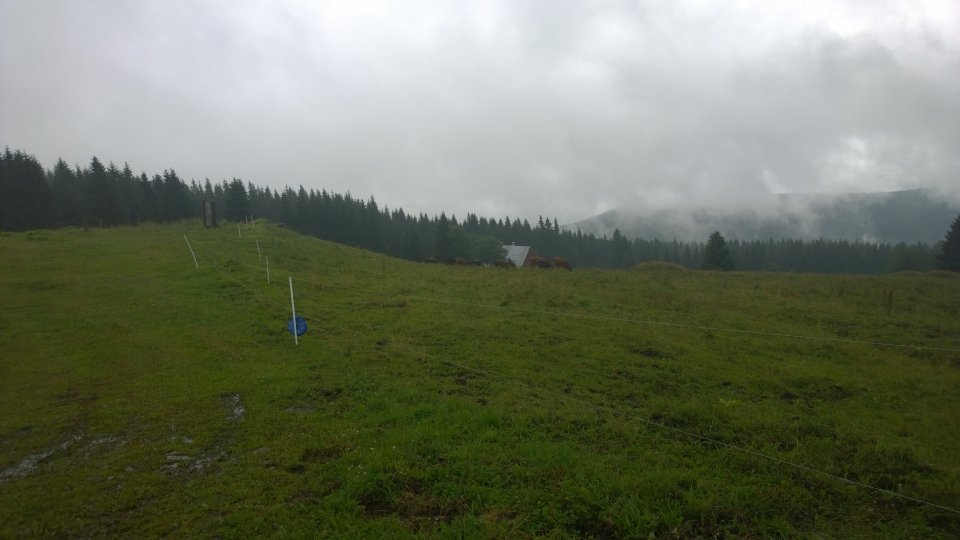
This year too, we attempted additional activities with farmers on many sites, such as spring harrowing (135 ha) mowing and raking of ungrazed leftovers, haymaking before grazing and leaving of unmown strips in meadows. This is aimed at fragmenting the established uniform management of meadows into a mosaic as varied as possible. The reason is that this management practice is appropriate for not only herbs but also animals, notably invertebrates.

The best management mosaic was achieved at Severka, Velké Tippeltovy Boudy and Niklův vrch. The largest mowing mosaic was seen at Patejdlova bouda for the third year in a row.
Many of the meadow enclaves still need resolute technical interventions restoring sustainable regular management. Therefore, the SKRNAP working group functioned in the mountain meadows again in 2017; it was three-headed this time, and made agreements with contractors for jobs that exceeded the technical capacities of the working group.
 The working group destroyed invasive plants on 7.5 hectares, both mechanically and chemically. They cut self-seeding trees in
The working group destroyed invasive plants on 7.5 hectares, both mechanically and chemically. They cut self-seeding trees in
3 ha of meadows. In addition, the group members restored 380 metres of drains and removed 10 tonnes of stones from meadows, laying them into walls or piles. They then milled away several dozen small stumps
that hindered appropriate meadow management, such as mowing.
Under the contracts, 0.6 ha of invasive plants were destroyed, 330 m of drains cleared, several dozen hindering stumps milled away, and almost 2 ha of bilberry bushes destroyed. This year, we cut over 8 ha of self-seeding trees, which were removed using a helicopter from inaccessible sites (e.g., Klášterka, Velké Tippeltovy Boudy).
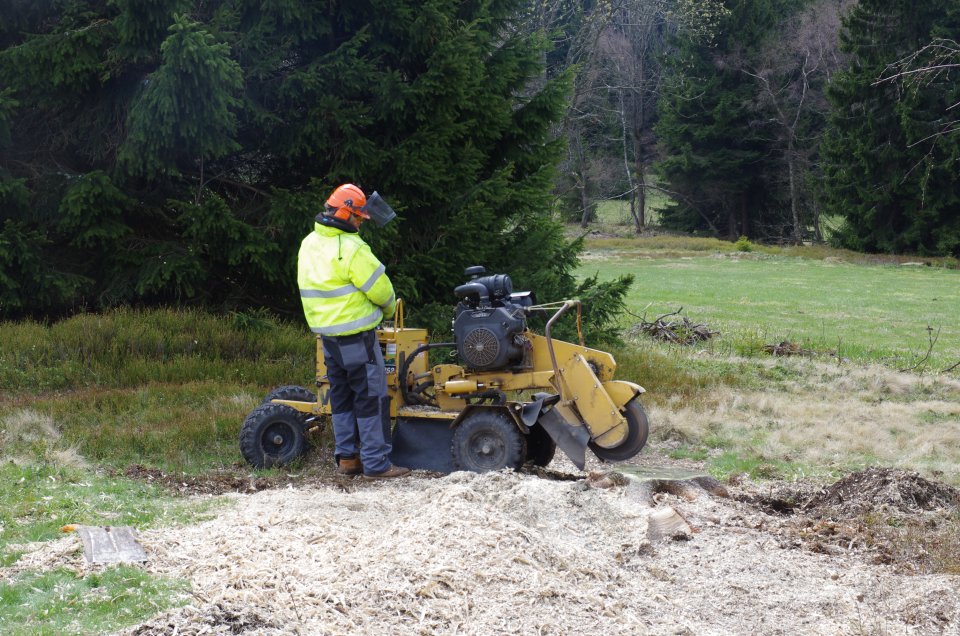
This activity also involved individual farmers, who destroyed bilberry bushes in “their” enclaves (8.5 ha) and fertilised selected nutrient-poor patches of meadows with compost (8 ha).
The last season in the considerate management plans was implemented directly on 80 ha of all the 11 involved farms.
Works also continued on two sites supporting the rare Bohemian dwarf gentian (activity C6). The dwarf gentian management proceeds in two waves: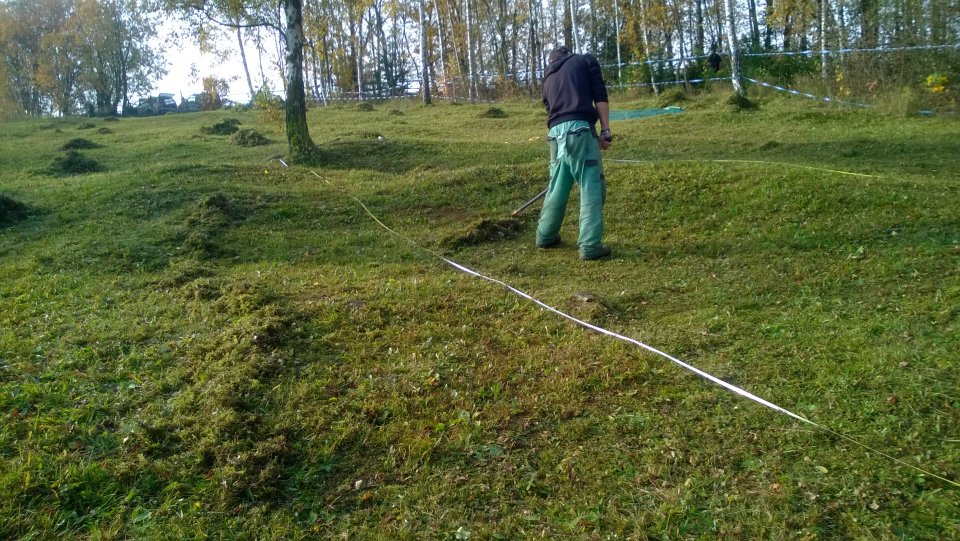 the first stage, in early summer, involves mowing the area supporting the dwarf gentian and raking away the biomass. Disturbance management proceeds in the autumn stage, after dwarf gentian plants have fully blossomed and shed their seeds. This method consists in mowing the site, raking away the biomass and disturbing the turf in strips, both by verticutting and using gaps, which are spots with exposed soil. These spots are very important for germination and rooting of dwarf gentian seedlings. We counted 80 plant individuals in our single population in 2017, which is the most in the course of the project and long before it.
the first stage, in early summer, involves mowing the area supporting the dwarf gentian and raking away the biomass. Disturbance management proceeds in the autumn stage, after dwarf gentian plants have fully blossomed and shed their seeds. This method consists in mowing the site, raking away the biomass and disturbing the turf in strips, both by verticutting and using gaps, which are spots with exposed soil. These spots are very important for germination and rooting of dwarf gentian seedlings. We counted 80 plant individuals in our single population in 2017, which is the most in the course of the project and long before it.
Landscaping for the European bullhead (activity C7) was completed with measures for increasing the heterogeneity and stabilisation of the Albeřický brook bed. In four places , large stones were set over a length of approx. 5 m so as to produce small hiding places for bullheads on the bottom and in the adjacent banks. We organised the second workshop on the European bullhead where we presented the condition of Czech rivers and their passability with a focus on the Krkonoše Site of Community Importance. However, the workshop was not a good-bye to bullheads, because we published a book on them in mid-year: Vranka obecná a péče o vodní toky v Krkonoších (European bullhead and watercourse management in the Krkonoše).
The monitoring included evaluation of data collected (in 2013-2017) and their results will be soon presented in an article on the monitoring, about which we will soon inform you. We can tell you something about the monitoring now.
We proved presence of 3 fish species (including bullheads) and lampreys (and stone crayfish) in the Bolkovský brook; during the implementation works (C7) we moved the populations to other, appropriate sections of the watercourse, and monitoring after the works confirmed spontaneous recolonisation of the modified section of the watercourse. No bullheads were caught in the Albeřický brook before or after the works, but local fishermen informed us that bullheads were caught in the modified section of the watercourse in 2017.
We mentioned monitoring of the dwarf gentian in the paragraph above.
Monitoring of invertebrates proceeded in 29 meadow enclaves, producing the first comprehensive data set on the species composition of invertebrates in KRNAP mountain meadows. The most important recommendation arising from the invertebrate monitoring is increased variety of appropriate management measures (mosaic) and leaving of unmown or unmanaged strips.
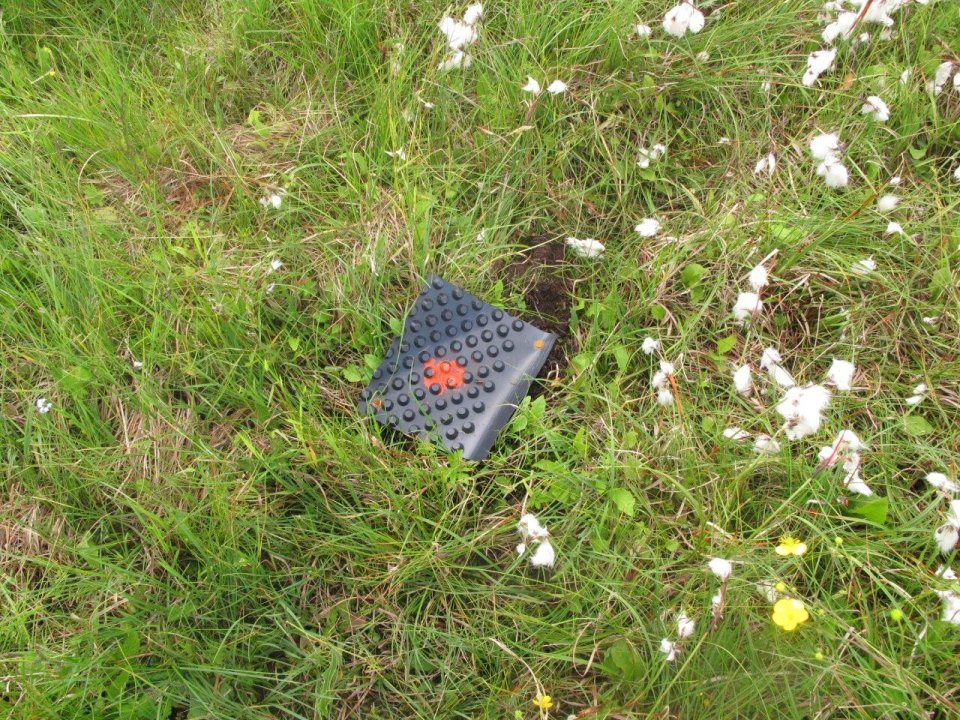
Meadow monitoring proceeded on 90 permanent sites, including 80 managed by the project and 10 unmanaged. The data obtained clearly indicate that the project prevent degradation of Krkonoše meadow vegetation. The conservation status of 18% of the monitored meadow biotopes managed by the project improved considerably, 67% of the biotopes did not change, and 15% worsened considerably. Compared to that, the status of most of the ten monitored unmanaged meadows worsened considerably (60%), while the rest was without change.
As part of the project promotion, you could read about us in several articles, see us on the TV and hear us on the radio; see the tab Media. We organised a final press conference on the project impacts on Krkonoše meadows, attended by representatives of dailies, radio and television. The conference included several live reports for the Czech Television. We issued 2 press releases on Farmer Trails and Krkonoše Revived (towards the end of the project). We were reported on in 29 articles. Czech Radio HK made a report on the project end press conference titled LIFE CORCONTICA Project Ends. There were several reports on ČT 24 about the project completion, and a ČT1 travel show introduced the Krkonoše Farmer Trails; the episode introduced the principle of the Farmer Trails in the Krkonoše and presented one of them, Arnika, in more detail.
We provided awareness-raising about meadows and their history for the Brontosaurus association (for the fourth time), for several primary school and kindergarten groups on Earth Day in Jilemnice and Hostinné, and for the Ambassador of Israel.
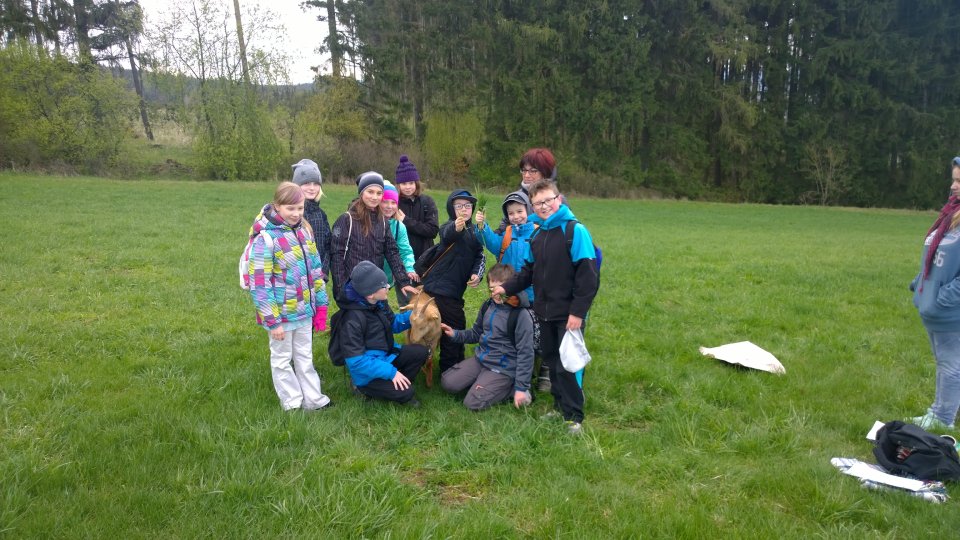
The seventh grade of Vrchlabí primary school arrived for the third time to see our programme on meadows. In cooperation with KRNAP environmental education staff, we produced a new programme on meadows (with a theoretical and practical part), which will soon be offered to the public and schools.
In June, we were permitted to make a study trip to the Tyrol Alps, where we learnt about Alpine meadow management, an issue that the Alps face, and the financial (subsidy) background of the management. An article presenting identical and differing aspects of the management of Krkonoše and Alpine meadows will be available soon.
Several volunteer groups applied for work in the meadows again in 2017. Students from the secondary school of the Czech Forestry Academy in Trutnov and ČMSS staff arrived for the second time. A scout team helped us this year as part of their event OBROK2017. We are grateful for everyone’s involvement.
In addition to the book on the bullheads,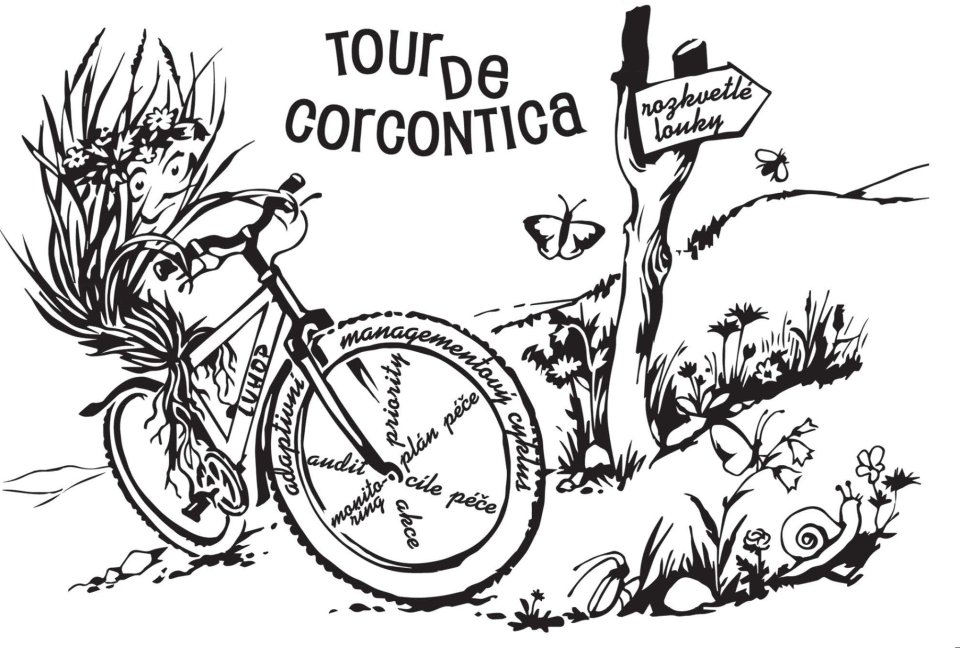
we also produced a publication on meadows – Tour de Corcontica, or the path to flowering meadows, intended primarily for the professional public.
We worked on the Laymans Report at the end of the year; it is a report on the project activities in 2012 -2018.
We organised a seminar on the Farmers’ Portal in the autumn, attended by farmers involved in the project as well as several outside the project. We presented the monitoring carried out under the project to KRNAP Administration and NCA staff.
We developed the Krkonoše Farmer Trails and printed a leaflet as part of the marketing study.
At a conference on invasive plants in Milan, we published our report on invasive plants in the Krkonoše, methods of their destruction and results achieved. At a conference on LIFE programmes in Prague, we presented the project results and progress.
Our project sheep again stood by our meadow enclaves, informing about the project activities. However, we were surprised by the early snow this year (which would not thaw), so some of the project sheep stayed unfound under the snow layer (even avalanche spikes were of no avail; they were probably moved by the wind); we can thus look forward to more surprises in the spring of 2018. But don’t worry, we will take the sheep home again for due care and restoration.


